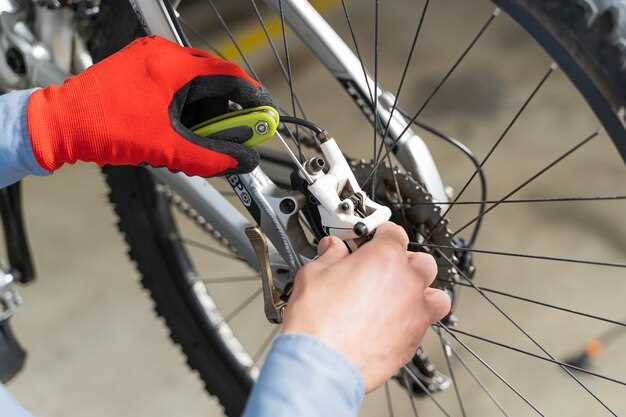
A well-maintained motorcycle chain is vital for optimal performance and longevity. Regular cleaning and lubrication not only ensure smooth operation but also prevent premature wear and tear. This guide will provide essential tips for effectively maintaining your chain, helping you to ride confidently and safely.
Cleaning your motorcycle chain is an essential step in the maintenance process. Over time, dirt, grime, and debris accumulate, which can lead to rust and corrosion. Implementing a routine cleaning schedule will not only keep your chain looking pristine but will also enhance its functionality. In this article, we will discuss the best methods and products for cleaning your chain, ensuring that it performs at its best.
After cleaning comes lubrication, which is equally crucial for maintaining a healthy chain system. Proper lubrication reduces friction, enhances performance, and prevents damage from wear. We will provide valuable tips on how to choose the right lubricants and the correct application techniques to ensure a long-lasting and efficient motorcycle chain.
Step-by-Step Chain Cleaning Process for Optimal Performance

Maintaining your motorcycle chain is essential for optimal performance and longevity. A clean and well-lubricated chain ensures smooth operation, enhances safety, and improves overall ride efficiency. Follow these steps for an effective chain cleaning process.
Step 1: Gather Your Supplies
Before starting, collect necessary supplies: a suitable chain cleaner, a soft brush, a microfiber cloth, degreaser, and motorcycle chain lube. Having everything ready will streamline the cleaning process.
Step 2: Prepare the Motorcycle
Place your motorcycle on a stable and level surface. If available, use a paddock stand to elevate the rear wheel to facilitate easier access to the chain.
Step 3: Inspect the Chain
Examine the chain for any signs of damage, wear, or foreign materials. Identifying issues early can prevent further complications.
Step 4: Apply Chain Cleaner
Use the chain cleaner and apply it liberally to the chain. Ensure the cleaner penetrates the rollers and links. Let it sit for a few minutes to break down contaminants.
Step 5: Scrub the Chain
Using a soft brush, scrub the chain thoroughly. Pay attention to areas where grime tends to accumulate. This step is crucial for effective cleaning.
Step 6: Rinse the Chain
After scrubbing, rinse the chain with water or wipe it down with a clean, damp cloth to remove all residues of the cleaner. Make sure no cleaner remains, as it can affect lubrication.
Step 7: Dry the Chain
Using a microfiber cloth, dry the chain completely. Ensuring the chain is dry before lubrication prevents trapping moisture that can lead to rust.
Step 8: Apply Lubricant
Once the chain is dry, apply the motorcycle chain lube evenly while rotating the chain. This step is essential for providing protection and reducing friction.
Step 9: Wipe off Excess Lube
After lubricating, take a clean cloth and wipe off any excess lube. Excess lubricant can attract dirt and grime, negating your cleaning efforts.
Step 10: Final Check and Reassembly
Finally, inspect the chain once more to ensure everything is in order. Check the tension and alignment if necessary. Your motorcycle is now ready for a smooth ride.
By following these detailed cleaning and lubricating tips, you’ll maintain your motorcycle chain in optimal condition, enhancing both performance and safety.
Choosing the Right Chain Lubricant for Your Motorcycle

Selecting the ideal chain lubricant for your motorcycle is crucial for maintaining optimal performance and enhancing the lifespan of the chain. Different environments and riding conditions require specific lubes to provide the best protection and cleaning. Here are some essential tips to guide your choice.
First, consider the type of lubricant. There are generally two categories: wet and dry lubes. Wet lubes are perfect for wet conditions, as they adhere strongly to the chain and repel water. However, they can attract more dirt and grime, which means more frequent cleaning. In contrast, dry lubes are better for dry and dusty conditions, as they leave a cleaner residue and help to keep dirt from sticking. Choose based on your typical riding environment.
Next, evaluate the viscosity of the lube. A thicker lubricant may provide better protection and last longer between applications, but it could also lead to a messier chain. Thinner lubes may require more frequent application but can effectively penetrate tight spots and distribute evenly. Balance your choice based on your maintenance routine and preferences.
Always prioritize lubricants that offer cleaning properties. Some products contain solvents designed to break down dirt and contaminants, making the cleaning process simpler. A multi-functional lube that cleans while lubricating can save time and enhance the efficiency of your maintenance efforts.
Finally, consult the manufacturer’s recommendations. Many motorcycle brands specify certain lubricants that are best suited for their chains. Following these guidelines ensures compatibility and optimal performance. Remember, a well-lubed chain won’t just improve your bike’s performance; it also contributes to smoother rides and longer chain life.
Common Mistakes to Avoid During Chain Maintenance
Maintaining your motorcycle chain is essential for optimal performance and longevity. However, several common mistakes can hinder your efforts and potentially damage the chain or other parts of your bike.
One significant mistake is neglecting proper cleaning methods. Using harsh chemicals or abrasive materials can damage the chain’s surface. Always opt for chain-specific cleaners and soft brushes to effectively remove dirt without causing harm.
Another prevalent error is irregular maintenance intervals. Skipping cleaning and lubrication can lead to excessive wear and reduced efficiency. Establish a regular schedule based on your riding habits–cleaning and applying lube every 500-1000 kilometers is generally recommended.
Improper application of lube is also a common pitfall. Over-lubricating can attract more dirt and grime, while under-lubricating can result in increased friction and wear. Follow the manufacturer’s guidelines for the appropriate amount of lube to use.
Ignoring the chain tension is another mistake to avoid. A chain that is too tight can lead to premature wear on both the chain and sprockets, while a loose chain can impact performance and safety. Regularly check and adjust the tension as required.
Lastly, failing to inspect the chain for signs of wear can lead to catastrophic failure. Regularly check for rust, stiff links, or elongation. Catching these issues early can save you from costly repairs or dangerous rides.
